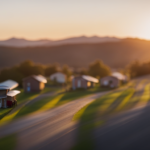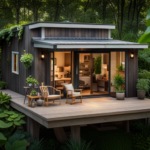Beginners Guides
D&D How Much Is A Tiny House
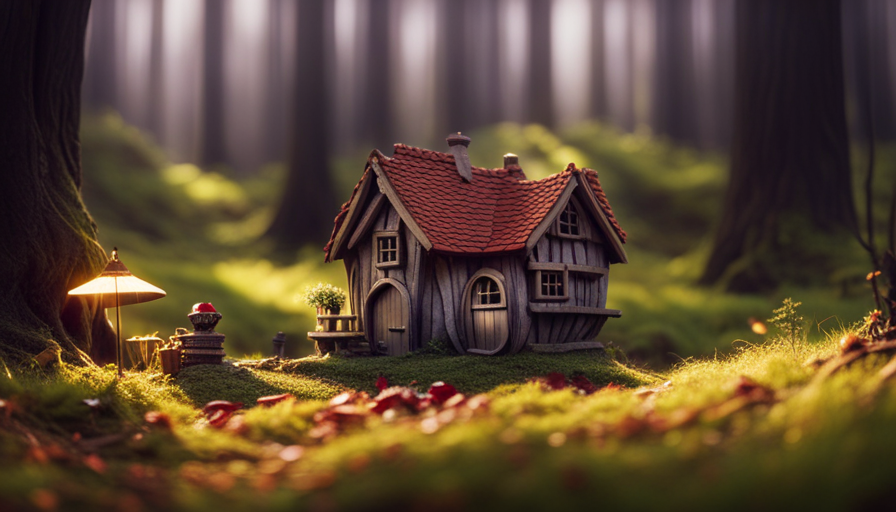
The concept of residing in a tiny house has always captivated me – a dwelling that captures the essence of simplicity, minimalism, and freedom. However, before diving into this distinctive living situation, it’s crucial to grasp the financial considerations associated with it.
So, let’s dive into the world of tiny houses and answer the burning question: ‘D&D How much is a tiny house?’ Brace yourself, because the answer might surprise you.
When it comes to determining the cost of a tiny house, there are several factors to consider. From the size and materials used to the location and additional features, each element plays a significant role in the final price tag.
On average, a tiny house can range anywhere from $20,000 to $100,000, but this is just the tip of the iceberg. There are additional expenses to consider, financing options to explore, and cost-saving tips to keep in mind.
Join me on this journey as we uncover the true cost of living in a tiny house, explore its pros and cons, and discover the hidden expenses that may catch you off guard.
Let’s embark on this adventure together and unlock the financial secrets behind the world of tiny houses.
Key Takeaways
- Tiny houses offer simplicity, minimalism, and freedom, making them an attractive lifestyle choice.
- The cost of a tiny house can range from $20,000 to $100,000 depending on various factors such as size, materials, location, and customization options.
- Additional expenses to consider when owning a tiny house include land and parking costs, utilities, and maintenance.
- Utilizing recycled materials and upcycling can help save money and add a unique charm to a tiny house.
Factors Affecting the Cost of a Tiny House
You may be wondering what factors influence the cost of a tiny house. Well, there are several factors that can affect the average cost of a tiny house.
One of the main factors is the size of the house. Generally, the smaller the house, the lower the cost. However, other factors such as materials used, location, and customization options can also impact the price.
For example, if you choose to go off-grid with solar panels, composting toilets, and rainwater collection, these options can increase the overall cost. Additionally, the level of craftsmanship and quality of materials can also play a role.
Now that we’ve discussed the factors affecting the cost of a tiny house, let’s move on to the next section where we’ll delve into the average cost of a tiny house.
Average Cost of a Tiny House
On average, a cozy little abode like this can set you back a pretty penny. When looking at the average cost of a tiny house, there are several factors that can greatly affect the construction costs.
The size of the house, the materials used, and the level of customization all play a role in determining the final price. Additionally, the location of the build can also impact the cost, as construction costs can vary greatly depending on the region.
It’s important to consider these factors when budgeting for a tiny house project. However, it’s worth noting that while tiny houses can be expensive, they are often seen as a more affordable alternative to traditional housing options.
When considering the cost of a tiny house, it’s also important to take into account the additional expenses that may arise during the construction process.
Additional Expenses to Consider
When considering the overall cost of a tiny house, it’s important to take into account additional expenses. These include land and parking costs, utilities and off-grid options, and maintenance and upkeep.
Land and parking costs can vary depending on location and whether you choose to rent or buy, so it’s crucial to factor this into your budget.
Additionally, utilities and off-grid options should be considered as they can greatly impact your monthly expenses.
Finally, don’t forget about the ongoing maintenance and upkeep costs that come with owning a tiny house, as these can add up over time.
Land and Parking Costs
Land and parking costs can significantly impact the overall price of a tiny house. When considering the cost of a tiny house, it’s important to factor in the expenses associated with land development and parking restrictions.
Depending on where you plan to place your tiny house, you may need to purchase land or secure a long-term lease. Land development costs include site preparation, such as clearing land, installing utilities, and building a foundation. Additionally, some areas have specific regulations and zoning restrictions for tiny houses, which may further increase the cost.
Parking costs can vary depending on whether you choose to park your tiny house on private property, in a tiny house community, or in an RV park. It’s essential to research and consider these expenses when budgeting for your tiny house project.
Transitioning into the subsequent section about utilities and off-grid options, it’s important to also factor in the cost of utilities and alternative power sources when determining the overall price of a tiny house.
Utilities and Off-grid Options
Transitioning into the next section, let’s shed some light on the power of utilities and the electrifying options available for those seeking off-grid living.
Off-grid living offers a unique opportunity to disconnect from traditional utility services and explore alternative energy sources. Many tiny house dwellers choose to harness the power of the sun through solar panels, which not only reduces their carbon footprint but also provides them with a reliable source of electricity. Additionally, wind turbines and hydroelectric systems are viable options for generating renewable energy.
These alternative sources of power allow tiny house owners to live sustainably and independently. By utilizing off-grid living and alternative energy sources, individuals can reduce their reliance on traditional utilities and embrace a more self-sufficient lifestyle.
Transitioning into the subsequent section about ‘maintenance and upkeep,’ it is important to consider the ongoing care required for a tiny house.
Maintenance and Upkeep
Taking care of my compact home requires regular maintenance and upkeep to ensure its longevity and functionality. It’s important to consider the maintenance cost as part of the long-term investment in a tiny house.
The cost of maintenance will vary depending on the materials used and the specific features of the house, but it’s generally lower compared to traditional homes. Regular tasks such as cleaning, checking for leaks, and inspecting the electrical and plumbing systems should be performed to prevent any major issues. Additionally, keeping up with routine maintenance can help avoid costly repairs down the road.
With proper care, a tiny house can last for many years, providing a comfortable and sustainable living space.
Transitioning into the subsequent section about financing options for tiny houses, it’s essential to explore different ways to fund this unique lifestyle.
Financing Options for Tiny Houses
While exploring financing options for tiny houses, it’s important to consider the budget and find a solution that brings your dream home within reach. When it comes to tiny house financing, there are a few options to consider.
One option is renting a tiny house, which allows you to experience the tiny house lifestyle without committing to a long-term investment.
Another option is buying a tiny house, which gives you the freedom to customize and own your home. Additionally, there are loan options available specifically for tiny houses, such as personal loans or RV loans. These loans can help cover the cost of building or purchasing a tiny house.
By exploring these financing options, you can find the best fit for your financial situation and make your tiny house dreams a reality.
Now, let’s transition into discussing cost-saving tips for building a tiny house.
Cost-saving Tips for Building a Tiny House
When it comes to building a tiny house, there are several cost-saving tips to consider.
One way to save money is by upcycling and using recycled materials, which not only helps the environment but also reduces expenses.
Another consideration is whether to opt for a DIY approach or hire contractors, as doing the work yourself can save money but may require more time and skill.
Lastly, simplifying the design and layout of your tiny house can help minimize costs by reducing the amount of materials and labor needed.
Overall, these cost-saving tips can make building a tiny house more affordable and sustainable.
Upcycling and Using Recycled Materials
Using recycled materials not only helps the environment, but it also adds a unique and rustic charm to your tiny house. Incorporating upcycling ideas and utilizing recycled materials can be a cost-effective way to build your dream space. Here are four ways you can incorporate recycled materials into your tiny house:
-
Salvaged Wood: Use reclaimed wood from old barns or pallets to create beautiful, weathered walls or flooring.
-
Vintage Fixtures: Scour flea markets or salvage yards for vintage fixtures like sinks, faucets, and light fixtures to add character to your tiny house.
-
Repurposed Furniture: Give new life to old furniture by repurposing it for your tiny house. For example, an old door can become a unique dining table, or an antique dresser can be transformed into storage.
-
Recycled Insulation: Consider using recycled denim or cellulose insulation made from recycled newspapers to insulate your tiny house.
By incorporating these upcycling ideas and utilizing recycled materials, you can create a sustainable and charming space for a fraction of the cost. Transitioning into the next section about ‘diy vs. hiring contractors,’ it’s important to weigh the benefits and drawbacks of each approach when building your tiny house.
DIY vs. Hiring Contractors
Building your dream space can be achieved by either taking on the project yourself or hiring contractors. When deciding between DIY and hiring contractors for building a tiny house, there are several factors to consider, including cost, time investment, and expertise required.
In terms of cost, DIY can be more budget-friendly as it eliminates labor costs. However, it’s important to note that hiring contractors may provide the advantage of professional expertise and access to discounted materials.
Time investment is another crucial aspect to consider. DIY projects require a significant amount of time and effort, especially if you lack experience. On the other hand, hiring contractors can expedite the construction process, allowing you to enjoy your tiny house sooner.
Ultimately, the decision between DIY and hiring contractors depends on your budget, time availability, and skill level. Simplifying design and layout can further optimize the construction process, which will be discussed in the next section.
Simplifying Design and Layout
To truly create your ideal living space, consider streamlining the design and layout by simplifying and optimizing every aspect.
Simplifying design is all about maximizing space in a tiny house. By reducing clutter and choosing multi-functional furniture, you can make the most of every square inch. Utilize built-in storage solutions and vertical space to keep things organized and create a sense of openness. Additionally, opting for an open floor plan can help create the illusion of a larger space and allow for better flow and functionality.
Remember to prioritize essential elements and eliminate unnecessary features to keep the design clean and efficient. By simplifying the design and layout, you can create a comfortable and functional tiny house that suits your needs and lifestyle.
When it comes to hidden costs, it’s essential to be aware of potential expenses that can arise during the building process.
Hidden Costs to Watch Out For
Beware of sneaky expenses that can catch you off guard when purchasing a tiny house! Hidden costs are a common concern when it comes to budget planning for a tiny house. While the initial cost may seem affordable, there are additional expenses that can quickly add up. To help you navigate these hidden costs, I have created a table below that outlines some potential expenses to consider:
| Hidden Costs | Description |
|---|---|
| Land | Purchasing or renting land for your tiny house can be a significant expense. |
| Permits and Fees | Depending on your location, you may need various permits and pay fees for utilities. |
| Utilities | Setting up utilities such as water, electricity, and sewage can incur extra costs. |
| Maintenance | Like any home, tiny houses require regular maintenance and repairs. |
| Insurance | Insuring your tiny house is essential and can vary in cost depending on coverage options. |
Considering these hidden costs is crucial to ensure you have a comprehensive understanding of the financial commitment involved in owning a tiny house. Now, let’s explore the pros and cons of living in a tiny house.
Pros and Cons of Living in a Tiny House
Living in a tiny house has its pros and cons. Financially, it offers significant benefits and savings as it requires less maintenance, utilities, and property taxes.
Moreover, the lifestyle and minimalism associated with tiny house living can promote a sense of freedom and simplicity.
However, potential challenges and limitations, such as limited storage space and the need for creative solutions, should also be taken into consideration before making the decision to live in a tiny house.
Financial Benefits and Savings
The financial benefits of owning a tiny house are simply out of this world! When conducting a cost benefit analysis, it becomes evident that the initial investment in a tiny house is significantly lower compared to a traditional home. Not only are the construction costs lower, but also the ongoing expenses such as utilities and maintenance. This translates into long-term savings that can accumulate over time.
Three key financial benefits of owning a tiny house are:
- Reduced mortgage payments or no mortgage at all
- Lower utility bills due to the smaller size and energy-efficient design
- Minimal maintenance and repair costs
With these financial advantages, it’s no wonder that more people are opting for a tiny house lifestyle. Moving on to the next section about lifestyle and minimalism, it is important to consider how these financial benefits align with the overall desire for a simpler and more sustainable way of living.
Lifestyle and Minimalism
Embracing a minimalist lifestyle allows individuals to experience a profound sense of freedom and contentment. This is precisely why the tiny house movement has gained so much popularity in recent years. By choosing to live in a tiny house, people are intentionally simplifying their lives and focusing on what truly matters. Minimalist living is all about eliminating excess and clutter, and instead, prioritizing experiences and relationships.
| Advantages of Minimalist Living | ||
|---|---|---|
| 1 | Financial Freedom | Owning a tiny house means significantly lower bills and expenses. |
| 2 | Environmental Impact | Tiny houses have a smaller carbon footprint and promote sustainable living. |
| 3 | Flexibility | With a tiny house, you can easily move and explore different places. |
Living in a tiny house allows individuals to escape the consumerist mindset and find fulfillment in the essentials. However, it is important to recognize that there are also potential challenges and limitations to this lifestyle choice.
Potential Challenges and Limitations
Dwindling in a downsized dwelling may demand determination and dedication. One of the potential challenges of living in a tiny house is navigating the complex world of zoning and regulations.
Many cities and towns have strict rules regarding the size, placement, and even the existence of tiny houses. Zoning laws often require a minimum square footage for residential properties, making it difficult to find a suitable location for a tiny house. Additionally, some areas may have regulations that restrict the use of tiny houses as permanent residences, limiting their potential as a long-term housing solution.
It’s important for aspiring tiny house owners to thoroughly research and understand the local regulations before investing in a tiny house, as it can save them from potential legal and logistical headaches down the road.
Frequently Asked Questions
Are there any zoning restrictions or regulations that apply to tiny houses?
Zoning restrictions and regulations are an important consideration when it comes to tiny houses. These guidelines vary depending on the location and jurisdiction, but there are some common legal concerns.
Many areas have minimum size requirements, setback requirements, and restrictions on where tiny houses can be placed. Some areas may also require permits and inspections.
It’s crucial to research and understand the specific zoning regulations in your area before building or purchasing a tiny house to ensure compliance with the law.
What is the average lifespan of a tiny house?
The average lifespan of a tiny house varies depending on the level of maintenance and care provided. Like a delicate bonsai tree, these homes require regular attention and upkeep to thrive. With proper care, a well-built tiny house can last for several decades. However, neglecting maintenance can significantly reduce its lifespan.
It’s important to budget for maintenance costs, which can range from minor repairs to major renovations, to ensure the longevity of your tiny house.
Can I legally park a tiny house on my own property?
Yes, you can legally park a tiny house on your own property, but there are some legal requirements and parking restrictions to consider.
These vary depending on your location and local zoning laws. It’s important to consult with your local government or zoning board to ensure compliance.
Some common requirements include obtaining permits, adhering to setback requirements, and meeting certain safety standards.
It’s always best to research and understand the specific regulations in your area before proceeding.
Are there any tax benefits or incentives for owning a tiny house?
There are potential tax benefits and incentives for owning a tiny house. One of the major advantages is the possibility of tax deductions. Depending on your situation, you may be able to deduct expenses related to your tiny house, such as mortgage interest, property taxes, and even certain home office expenses.
These deductions can lead to significant financial savings and make owning a tiny house more cost-effective in the long run.
How much does it cost to maintain a tiny house on a monthly basis?
Maintaining a tiny house on a monthly basis requires careful budgeting and planning. The cost breakdown includes utilities, insurance, and maintenance expenses. To save on costs, consider using energy-efficient appliances, installing solar panels, and utilizing composting toilets.
Additionally, implementing DIY repairs and regular cleaning can help prevent major issues and keep expenses low. Despite the initial investment, a well-maintained tiny house can provide long-term cost savings and a sustainable lifestyle.
Conclusion
In conclusion, the cost of a tiny house is not a small matter. It’s fascinating how something so tiny can have such a hefty price tag. But fear not, intrepid adventurers of minimalism, for there are financing options and cost-saving tips to navigate this treacherous terrain.
Just be wary of hidden costs lurking in the shadows, waiting to pounce on your budget. Living in a tiny house may have its pros and cons, but with a little wit and wisdom, you can make this tiny dream a reality.
Hi, I’m Emma. I’m the Editor in Chief of Tiny House 43, a blog all about tiny houses. While tree houses are often associated with childhood, they can be the perfect adult retreat. They offer a cozy space to relax and unwind, surrounded by nature. And since they’re typically built on stilts or raised platforms, they offer stunning views that traditional homes simply can’t match. If you’re looking for a unique and romantic getaway, a tree house tiny house might just be the perfect option.
Beginners Guides
How Do I Get Rid of Tiny White Bugs on My House Plants

- Health risks associated with tiny white bugs on house plants.
- Effective methods to prevent infestations of tiny white bugs on house plants
I am facing a small white insect issue with my indoor plants, and it is really frustrating me! These annoying bugs seem to be multiplying quickly, causing damage to my precious plants.
But fear not, my fellow plant enthusiasts, for I’ve done my research and found some effective solutions to eliminate these unwelcome guests.
In this article, I’ll share with you the knowledge and remedies I’ve discovered, so you too can reclaim your bug-free, thriving indoor garden.
Key Takeaways
- Aphids, mealybugs, and whiteflies are common types of tiny white bugs found on house plants.
- Lack of proper plant care, overwatering, and bringing infested plants indoors can lead to bug infestations.
- Homemade insecticides using water and dish soap or neem oil can suffocate and disrupt the feeding patterns of pests.
- Regular cleaning and inspection routines help detect and address pest issues early on.
Identifying the Tiny White Bugs on Your House Plants
I can easily spot the tiny white bugs on my house plants by carefully examining the leaves and stems. The most common species of these pests found on house plants are aphids, mealybugs, and whiteflies.
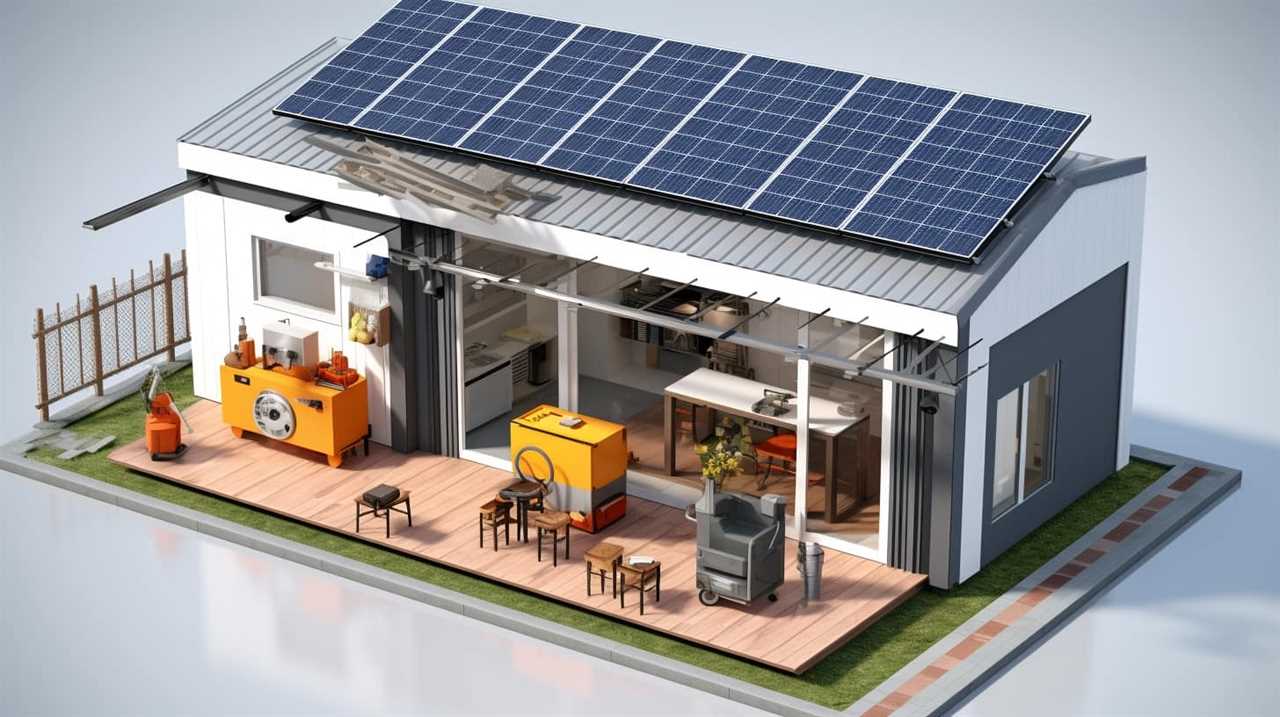
Aphids are small, pear-shaped insects that cluster on new leaves and buds.
Mealybugs are covered in a white, waxy substance and can be found on the undersides of leaves and in leaf axils.
Whiteflies, as the name suggests, are tiny white insects that fly around when disturbed.
An infestation of these tiny white bugs can cause significant damage to your house plants. Signs of infestation include yellowing leaves, stunted growth, distorted foliage, and a sticky residue called honeydew on the leaves. Furthermore, these pests can transmit plant diseases, weaken the plant’s immune system, and attract other pests.
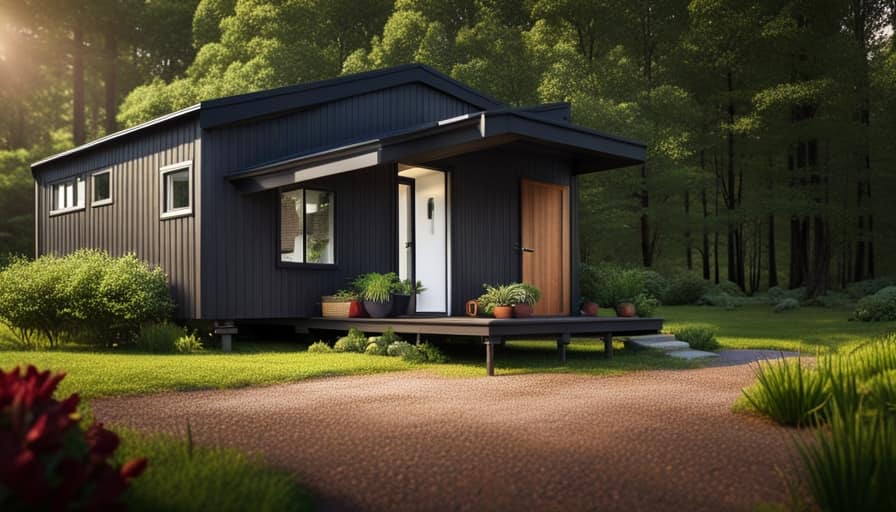
Understanding the causes of infestation is crucial in effectively getting rid of these tiny white bugs on your house plants.
Understanding the Causes of Infestation
Understanding the causes of infestation is essential in effectively eliminating these tiny white bugs on my house plants. Here are a few key factors to consider:
- Lack of proper plant care: Neglecting to provide adequate water, sunlight, and nutrients can weaken plants, making them more susceptible to bug infestations.
- Overwatering: Excessive moisture can create a favorable environment for pests like aphids and mealybugs.
- Bringing infested plants indoors: Introducing plants from outside without proper inspection can bring unwanted bugs into your home.
Recognizing the signs of bug damage is crucial for preventing infestation. Look out for yellowing, wilting leaves, sticky residue on leaves and stems, and tiny white bugs crawling on the plant’s surface.
Now that we understand the causes of infestation, let’s explore natural remedies to eliminate these pesky bugs.
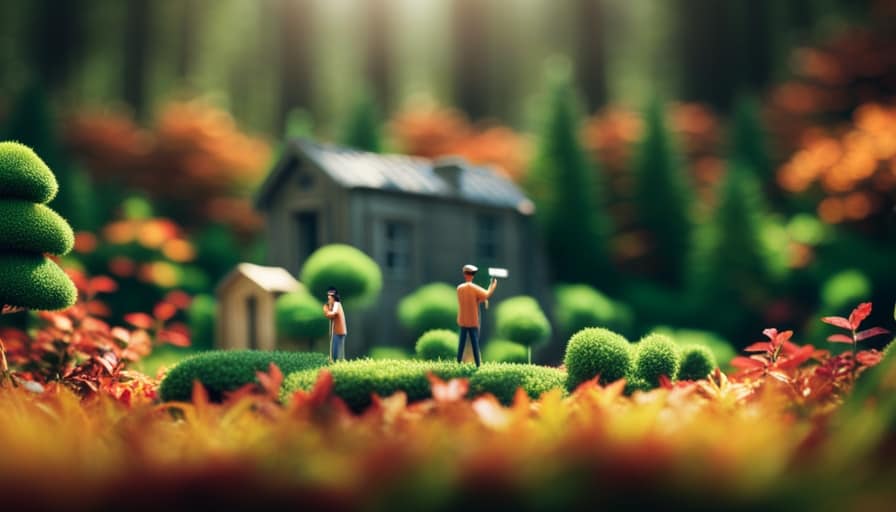
Natural Remedies to Eliminate the Bugs
To effectively get rid of these tiny white bugs on my house plants, I’ll need to rely on natural remedies that can eliminate them without harming the plants.
One effective option is to create homemade insecticides using ingredients readily available in your kitchen. You can mix a solution of water and dish soap, or water and neem oil, and spray it directly on the affected plants. These solutions work by suffocating the pests and disrupting their feeding patterns.
Another natural approach is to introduce insect-repelling plants into your garden. Plants like lavender, mint, and marigold emit fragrances that repel insects, keeping them away from your precious plants.
Chemical Solutions for a Lasting Bug-Free Environment
One effective chemical solution for achieving a bug-free environment is using a professional-grade insecticide spray. These sprays are specifically formulated to target and eliminate pests, including tiny white bugs on house plants. When using a professional-grade insecticide spray, it’s important to follow the instructions provided by the manufacturer to ensure safe and effective use.
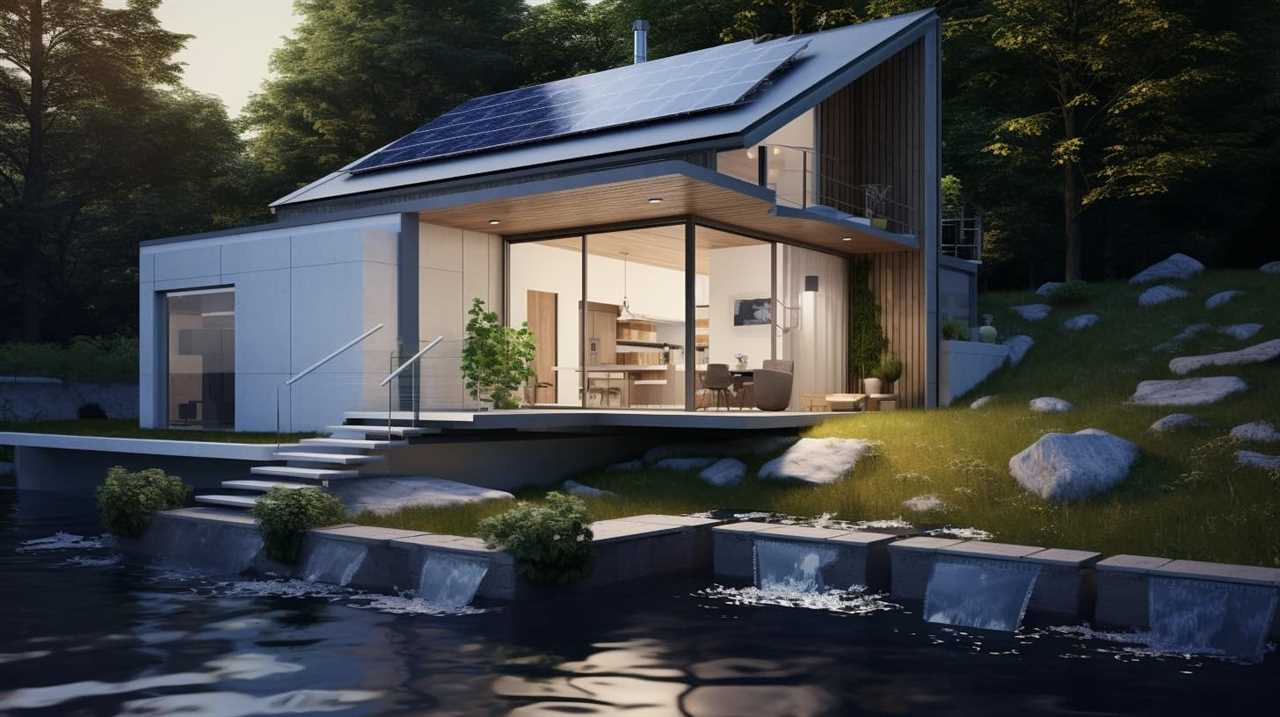
Additionally, consider these non-toxic alternatives to chemical solutions for pest control:
-
Neem oil: Derived from the neem tree, neem oil is a natural insecticide that can be effective against a wide range of pests. It works by disrupting the insect’s life cycle and repelling them from plants.
-
Insecticidal soap: Made from potassium salts of fatty acids, insecticidal soap works by suffocating pests on contact. It’s safe to use on most plants and can be an effective solution against white bugs.
-
Diatomaceous earth: This powdery substance is made from fossilized remains of diatoms and acts as a desiccant, drying out and killing insects.
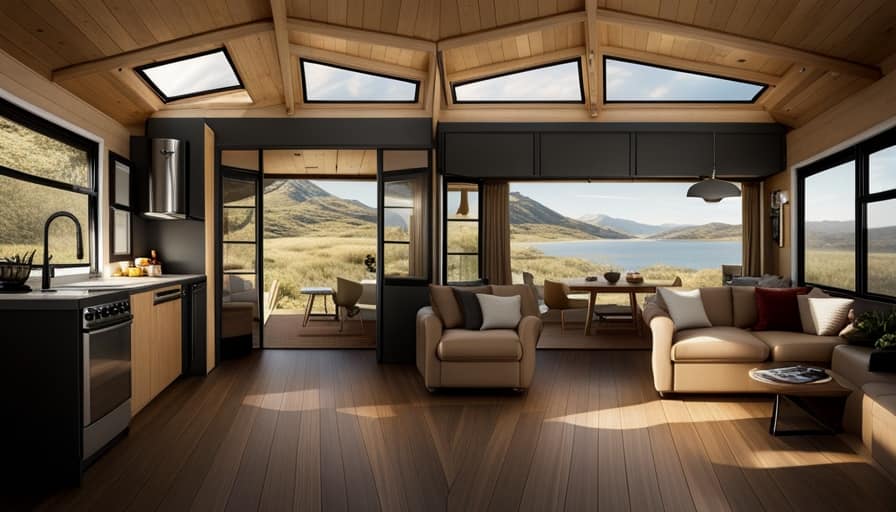
When using any chemical solution or non-toxic alternative, it’s essential to monitor the plants closely and repeat the treatment as necessary to maintain a bug-free environment. Professional pest control services can also provide expert guidance and assistance in achieving long-lasting results.
Preventing Future Infestations and Maintaining Healthy House Plants
To effectively prevent future infestations and maintain healthy house plants, I will implement a regular cleaning and inspection routine. This will help ensure that any signs of pests or diseases are detected early on and addressed promptly. Regularly cleaning the leaves and stems of my plants with a mild soap and water solution will help remove any dust or debris that can attract pests. Additionally, I will inspect the plants for any signs of infestation, such as white bugs or sticky residue on the leaves. To further enhance plant hygiene, I will also consider using beneficial insects, such as ladybugs or lacewings, which feed on common plant pests like aphids. By incorporating these practices into my routine, I can maintain healthy house plants and prevent future infestations.
| Regular Cleaning | Inspection Routine | Using Beneficial Insects |
| Remove dust and debris | Check for signs of infestation | Introduce ladybugs or lacewings to control pests |
| Promotes plant hygiene | Detect and address issues early | Natural pest control method |
| Prevents pest attraction | Maintain healthy house plants | Encourages ecosystem balance |
Frequently Asked Questions
Can These Tiny White Bugs Harm Humans?
Yes, tiny white bugs on house plants can harm humans. They can cause skin irritations and allergic reactions. It’s important to take steps to prevent infestations, such as regularly inspecting and cleaning your plants.
How Long Does It Take for Natural Remedies to Eliminate the Bugs Completely?
To completely eliminate the tiny white bugs using natural remedies, it typically takes a few weeks of consistent application. However, the effectiveness of these remedies can vary. It’s important to avoid common mistakes like under-applying or using incorrect remedies.
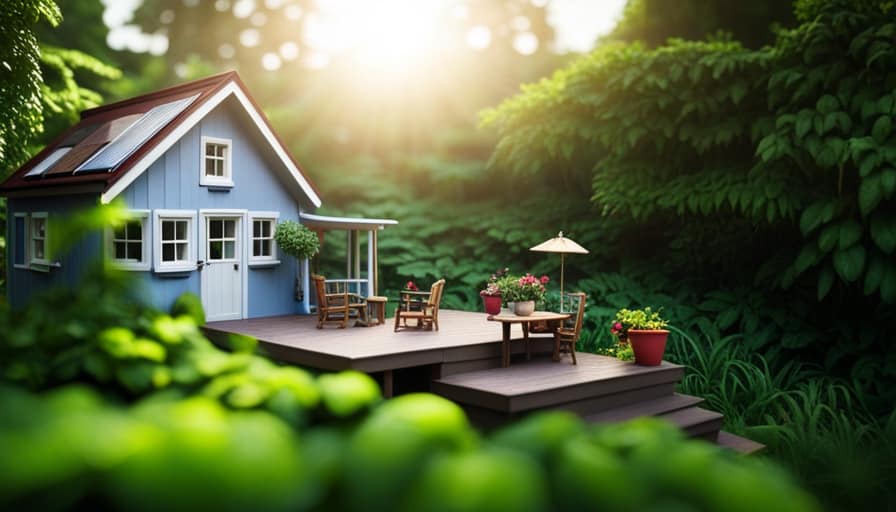
Are There Any Specific Types of House Plants That Are More Prone to Infestations?
Certain house plants, like lavender and marigolds, have natural repellent properties that can help prevent infestations. It’s important to choose plants that are known to repel bugs and to regularly inspect and clean your plants to avoid any potential infestations.
Can These Bugs Spread From One House Plant to Another?
Oh, the joy of tiny white bugs on house plants! Yes, these pests can spread from one plant to another. To control them, use insecticides and watch out for signs of infestation like sticky residue or wilting leaves.
How Often Should I Check My House Plants for Signs of Infestation?
I check my house plants for signs of infestation regularly to ensure their health. Common signs include tiny white bugs and yellowing leaves. Preventative measures like proper watering and cleaning can help keep plants bug-free.
Conclusion
In conclusion, taking care of our house plants goes beyond watering and sunlight. Identifying and eliminating tiny white bugs is a crucial part of maintaining a healthy environment for our plants.
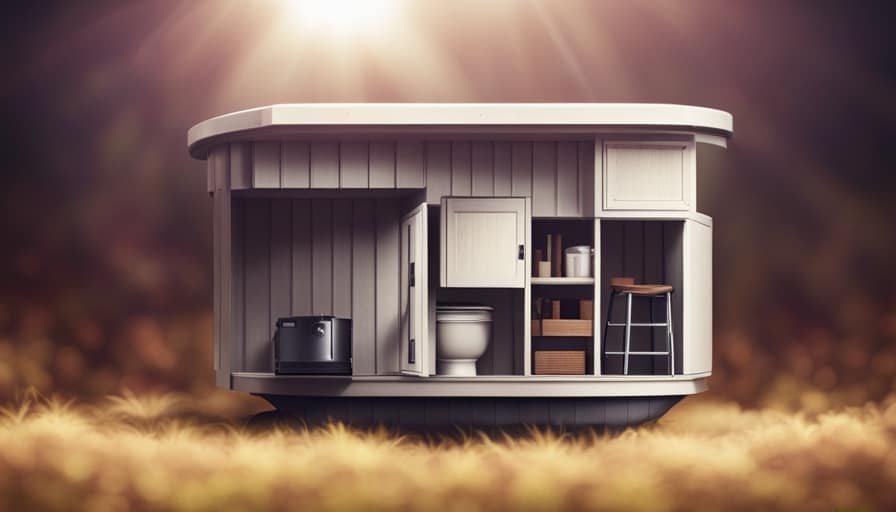
By understanding the causes of infestation and using natural or chemical remedies, we can ensure a bug-free environment. Remember, prevention is key, so regularly inspect your plants and take necessary measures to keep them thriving.
Happy gardening!
I’m Theodore, and I love tiny houses. In fact, I’m the author of Tiny House 43, a book about tiny houses that are also tree houses. I think they’re magical places where imaginations can run wild and adventures are just waiting to happen.
While tree houses are often associated with childhood, they can be the perfect adult retreat. They offer a cozy space to relax and unwind, surrounded by nature. And since they’re typically built on stilts or raised platforms, they offer stunning views that traditional homes simply can’t match.
If you’re looking for a unique and romantic getaway, a tree house tiny house might just be the perfect option.
Beginners Guides
How Do I Get Rid of Tiny Moths in My House

I have experienced the frustration of dealing with tiny moths flying around my food in the kitchen. But do not worry, I have a solution for you.
In this article, I’ll show you how to banish those pesky moths from your house for good. We’ll dive into identifying different moth species, understanding what attracts them, and simple prevention techniques you can implement.
Plus, I’ll share some natural remedies and professional options as a last resort. Say goodbye to those unwanted guests!
Key Takeaways
- Identifying the specific moth species is crucial for implementing targeted control measures.
- Moths are attracted to food sources, fabrics, and organic materials, so it’s important to store food in airtight containers and keep the house clean.
- Moths prefer dark, undisturbed areas to lay their eggs, so sealing cracks and openings in walls, windows, and doors can help prevent infestation.
- If natural remedies and DIY methods fail, it is advisable to seek professional pest control services for thorough inspection and tailored treatment plans.
Identifying the Culprits: What Type of Moth Is Invading Your Home
I can’t figure out what kind of moth is infesting my home. It’s frustrating not knowing the exact species, as different moths have different behaviors and habits. Identifying the culprits is crucial in order to effectively address the problem.
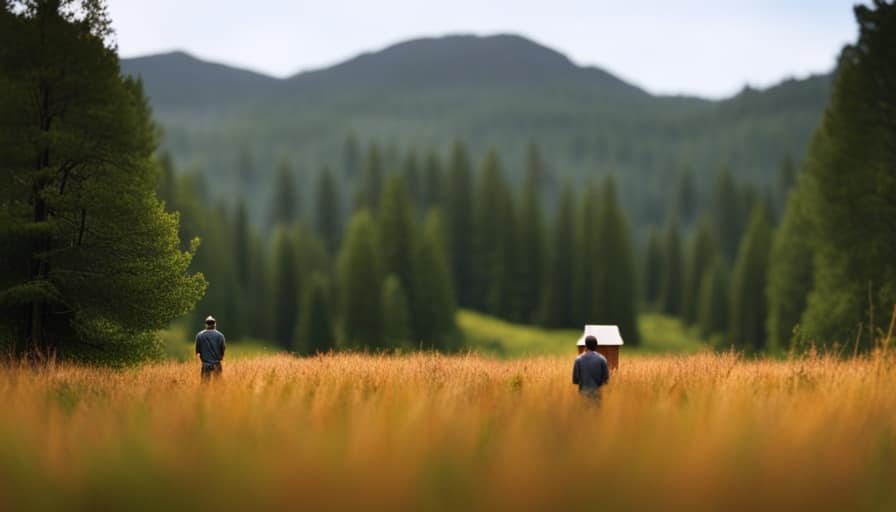
There are several common moth species that are known to invade homes, such as the Indian mealmoth, clothes moth, and pantry moth. Each species has distinct characteristics that can help with identification. Understanding their behavior is also important as it can give insights into their lifecycle and potential sources of infestation.
Moths are attracted to food sources, fabrics, and other organic materials. They can lay eggs in stored grains, textiles, or even pet food. By understanding the specific species and their behavior, it becomes easier to implement targeted control measures and prevent further infestations.
Understanding the Infestation: Why Are Moths Attracted to Your House
To effectively address the infestation, it’s essential to understand why moths are attracted to your house. Here are four reasons why moths may be flocking to your home:
-
Food sources: Moths are attracted to food, especially grains, cereals, and dried fruits. They can easily find their way into your pantry and feast on these items.
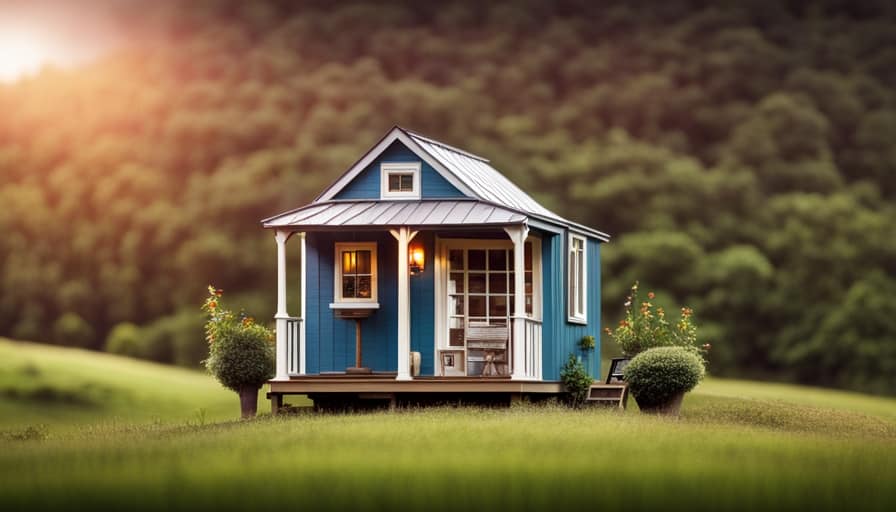
-
Moisture and humidity: Moths thrive in damp environments, making your house an ideal breeding ground if there are areas with high humidity or water leaks.
-
Suitable habitat: Moths are drawn to dark, undisturbed areas where they can lay their eggs undisturbed. This includes closets, attics, and basements.
-
Outdoor attraction: Moths can be attracted to your house from the outside, especially if you have outdoor lights that are left on at night.
Understanding moth behavior and their attraction to your house is crucial in preventing further infestation. By addressing these factors, you can take steps to keep moths at bay and protect your home.
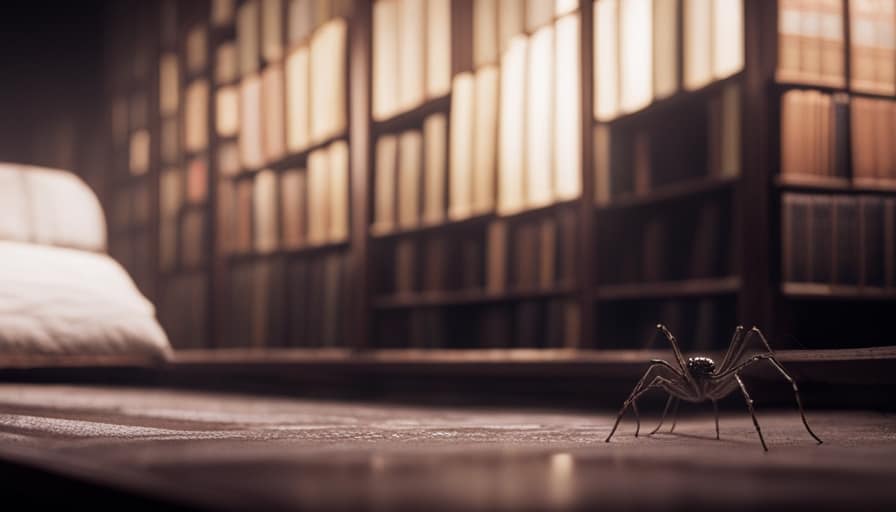
Here are some moth prevention tips:
- Store food in airtight containers.
- Keep your house clean and free of crumbs or spills.
- Fix any leaks or moisture issues promptly.
- Use moth repellents or traps in vulnerable areas.
Prevention Is Key: Simple Steps to Keep Moths From Entering Your Home
Prevention is essential, so I’ll share some simple steps to keep moths from entering your home. By taking a proactive approach, you can create an inhospitable environment for moths and minimize the risk of infestations. One effective method is to use moth repellent products, such as sachets or sprays, in areas where moths are commonly found. These repellents contain chemicals that deter moths from entering your home. Additionally, it is crucial to seal any cracks or openings in your walls, windows, and doors. Moths can easily slip through these tiny gaps, so using caulk or weatherstripping can help keep them out. Regularly vacuuming and cleaning your home can also eliminate moth eggs or larvae that may be hiding in carpets or corners. By implementing these preventive measures, you can ensure a moth-free home environment.
| Steps to Keep Moths Away | |
|---|---|
| Use moth repellent products | Seal cracks and openings |
| Regularly vacuum and clean |
Natural Remedies: Non-Toxic Solutions to Get Rid of Moths
One effective way to get rid of moths naturally is by using a combination of vinegar and water to create a non-toxic moth spray. Here are some natural remedies you can try:
-
Vinegar and water spray: Mix equal parts vinegar and water in a spray bottle. Spray this solution on areas where moths are present, such as closets, drawers, and pantry shelves. The strong odor of vinegar repels moths and prevents them from laying eggs.

-
Cedar chips: Moths dislike the smell of cedar, so placing cedar chips in your closets and drawers can help deter them. You can also use cedar oil or cedar sachets for the same effect.
-
Homemade traps: Create simple moth traps by placing a mixture of vinegar, sugar, and dish soap in a bowl. The sweet scent attracts moths, and the dish soap traps them when they try to land on the mixture.
-
Lavender sachets: Moths are repelled by the fragrance of lavender. Place dried lavender in small sachets and tuck them in your clothing drawers or hang them in your closets.
These natural repellents and homemade traps can help you get rid of moths without using toxic chemicals. However, if these methods fail to eliminate the infestation, it may be time to consider professional pest control options.
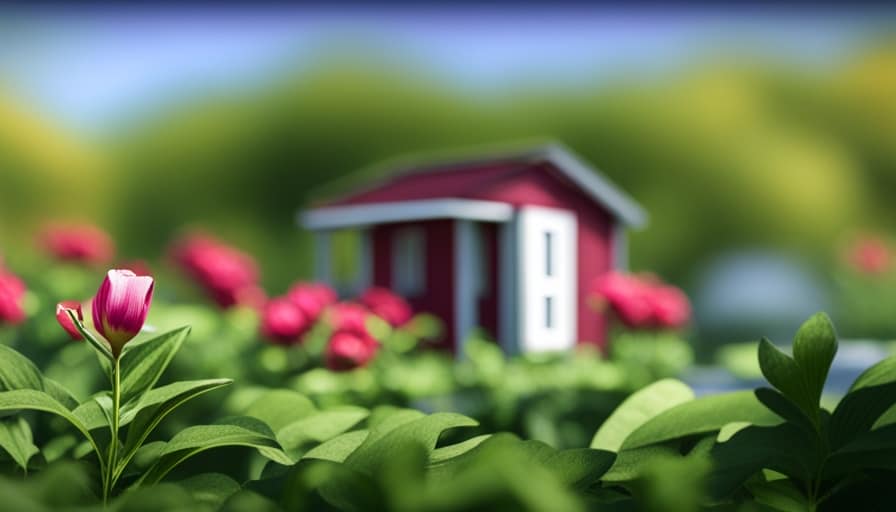
Last Resort: When All Else Fails, Professional Pest Control Options
If I’ve exhausted all other options, I’ll contact a professional pest control service to eliminate the moth infestation in my house. While natural remedies and DIY methods can be effective for small infestations, sometimes the problem persists or worsens despite our best efforts.
This is when it’s crucial to call in the experts. Professional pest control services have the knowledge, experience, and resources to effectively eradicate moth infestations. They’ll conduct a thorough inspection of your home to identify the source of the infestation and develop a tailored treatment plan.
The benefits of hiring professionals include their expertise in identifying different moth species, their access to specialized equipment and pesticides, and their ability to ensure the complete eradication of the infestation.
When all else fails, it’s best to rely on the expertise of professional pest control services to rid your home of those persistent moths.

Frequently Asked Questions
Can Moths Cause Any Damage to My House or Belongings?
Moths can cause damage to fabrics, carpets, and stored food. It’s important to address a moth infestation promptly. Using natural moth repellents, like lavender or cedar, can help deter them from your house and protect your belongings.
Are All Types of Moths Attracted to Homes, or Are There Specific Species That Are More Common?
In the world of moths, certain species have a penchant for our cozy homes. Understanding the types commonly found indoors can help us prevent the dreaded infestations from taking hold in the first place.
How Long Does It Usually Take to Get Rid of a Moth Infestation Using Natural Remedies?
Using natural remedies to get rid of a moth infestation can be effective, but the time it takes varies depending on the severity. Common signs of an infestation include sightings of adult moths and larvae, as well as damaged fabrics or food products.
Can Moths Carry Diseases or Pose a Health Risk to Humans?
Moths can transmit diseases to humans, so it’s important to take precautions. Individuals with allergies or asthma may experience respiratory issues due to moth infestations in homes.
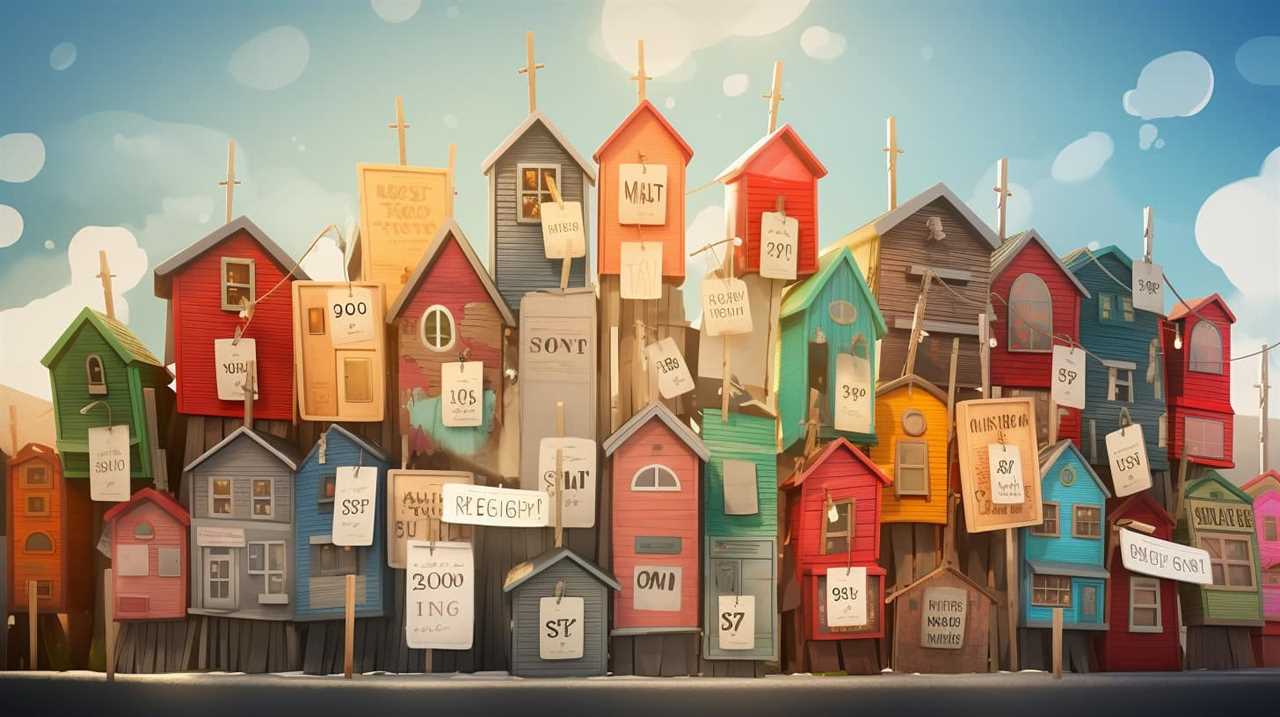
Are There Any Specific Plants or Herbs That Repel Moths and Can Be Used as Natural Remedies?
Using natural moth repellents, such as specific plants and herbs, offers several benefits over chemical alternatives. Creating a moth repelling garden with lavender, rosemary, and mint can effectively deter moths from your house.
Conclusion
In conclusion, it’s essential to address the presence of these minuscule pests in your home promptly. By identifying the specific type of moth invading your space and understanding their attraction, you can take preventive measures to keep them at bay.
Utilizing natural remedies and seeking professional pest control services as a last resort will ensure a moth-free environment without compromising your household’s well-being.
Stay vigilant and employ these effective methods to bid farewell to these unwelcome visitors.
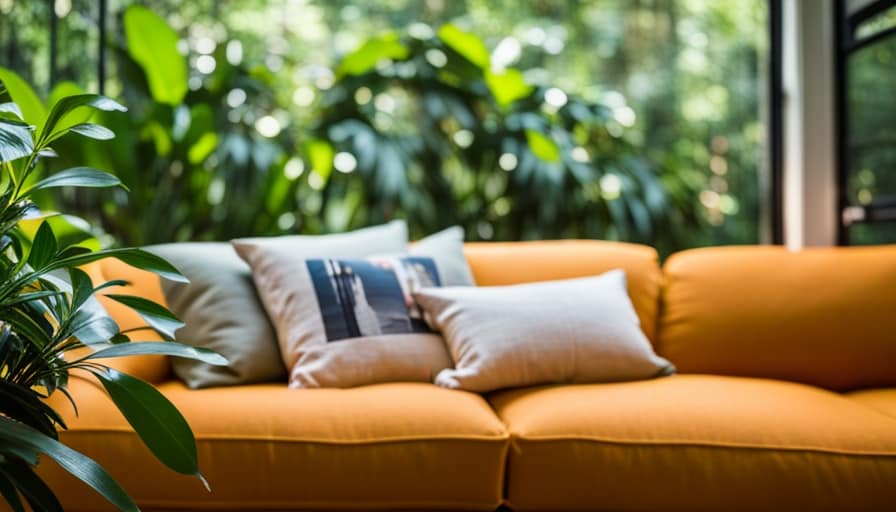
I’m Theodore, and I love tiny houses. In fact, I’m the author of Tiny House 43, a book about tiny houses that are also tree houses. I think they’re magical places where imaginations can run wild and adventures are just waiting to happen.
While tree houses are often associated with childhood, they can be the perfect adult retreat. They offer a cozy space to relax and unwind, surrounded by nature. And since they’re typically built on stilts or raised platforms, they offer stunning views that traditional homes simply can’t match.
If you’re looking for a unique and romantic getaway, a tree house tiny house might just be the perfect option.
Beginners Guides
How Difficult Is It to Build a Tiny House in Colorado Springs

I understand your concerns about building a tiny house in Colorado Springs. However, I can assure you that with the proper knowledge and guidance, it is completely achievable.
In this article, I’ll walk you through the zoning regulations, permitting process, finding suitable land, and navigating building codes. We’ll also discuss securing financing, budgeting, and dealing with utilities.
So, if you’re ready to embark on this rewarding journey, let’s dive in and make your tiny house dreams a reality.
Key Takeaways
- Zoning regulations and building permits are required for constructing a tiny house in Colorado Springs.
- Finding suitable land that complies with zoning regulations is important for placing a tiny house.
- Familiarizing oneself with local building codes and regulations, and following safety guidelines is necessary.
- Researching various financing options and presenting a detailed budget can increase the chances of securing financing for building a tiny house.
Zoning Regulations and Permitting Process
I’ll need to research the zoning regulations and permitting process before starting to build my tiny house in Colorado Springs. Understanding these regulations is crucial as they dictate where and how I can construct my tiny house.
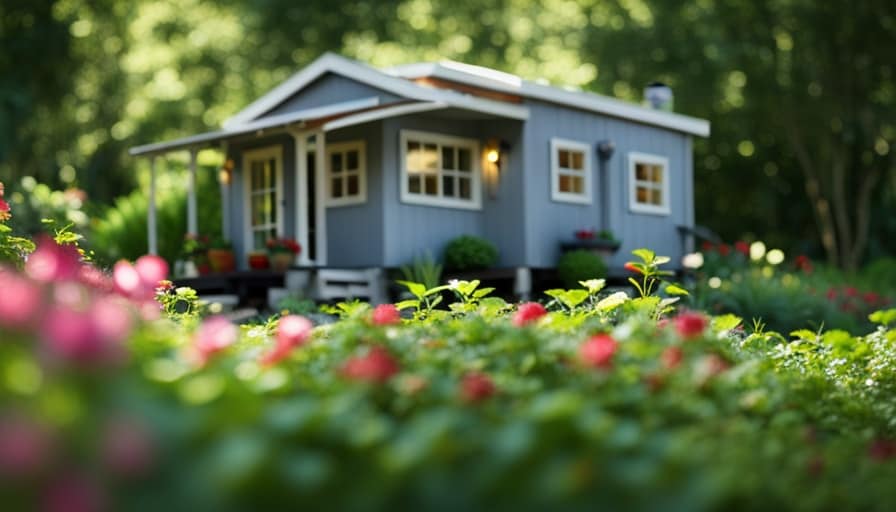
One key aspect to consider is the impact of tiny houses on property values. While some argue that they can decrease property values, others believe that they can actually increase them by adding diversity and uniqueness to the community.
Additionally, one of the challenges I may face is finding legal parking for my tiny house in urban areas. Many cities have restrictions on where tiny houses can be parked, making it essential to find suitable parking options that comply with local regulations.
With these factors in mind, I can now move on to finding suitable land for my tiny house.
Finding Suitable Land for Your Tiny House
After researching the zoning regulations and permitting process, it’s now time to start finding suitable land for my tiny house in Colorado Springs.
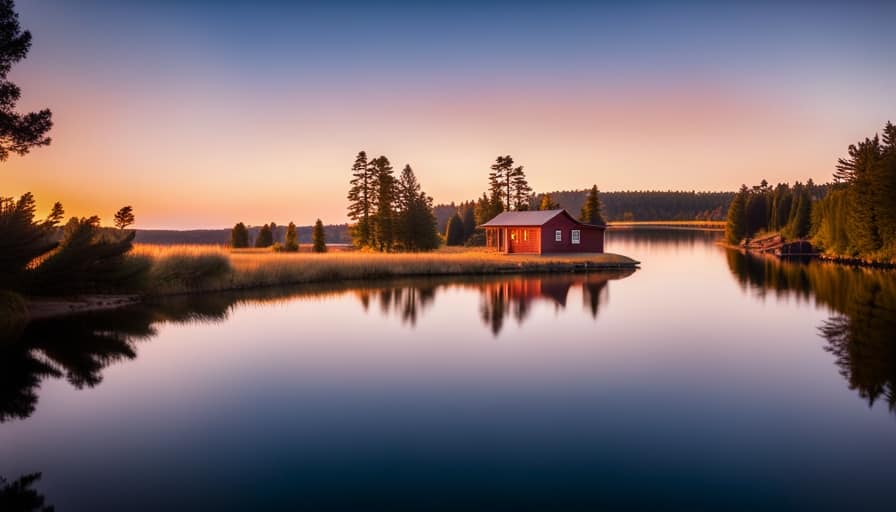
When it comes to finding land for a tiny house, there are a few important factors to consider. One of the major challenges is land availability constraints. Due to the increasing popularity of tiny houses, finding land that allows for their construction can be difficult. It’s important to do thorough research and explore different options, such as contacting local real estate agents or checking online platforms that specialize in tiny house-friendly land.
Additionally, environmental impact considerations are crucial. It’s important to choose a location that minimizes the impact on the surrounding environment and aligns with sustainable practices.
Taking these factors into account will ensure that I find a suitable piece of land for my tiny house in Colorado Springs.
Navigating Building Codes and Inspections
When it comes to navigating building codes and inspections for my tiny house in Colorado Springs, I’ll need to familiarize myself with the local regulations and ensure compliance throughout the construction process. Understanding local regulations is crucial to avoid any legal issues and ensure that my tiny house meets all the necessary requirements.
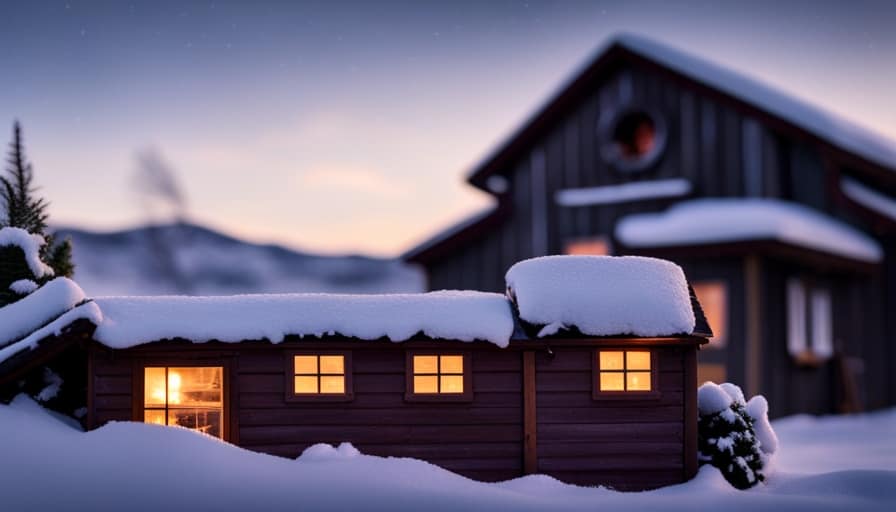
This includes obtaining proper permits, adhering to zoning laws, and following safety guidelines. To ensure a smooth process, I may consider hiring a professional builder who’s well-versed in local building codes and has experience with tiny house construction. Their expertise and knowledge will help me navigate the intricacies of the regulations and ensure that my tiny house is built according to the highest standards.
By understanding the local regulations and working with a professional builder, I can confidently proceed with my project while complying with all necessary codes and inspections.
With the building codes and inspections in mind, the next step is to secure financing and budget for my tiny house project.
Securing Financing and Budgeting for Your Project
To successfully secure financing and budget for my tiny house project in Colorado Springs, I frequently need to research various lenders and explore different funding options. Securing loans for a tiny house can be challenging, as it’s a unique type of project and not all lenders may be familiar with it. However, there are lenders who specialize in providing loans specifically for tiny houses.

It’s important to gather all the necessary documents and information required by the lenders, such as the cost estimation of the project, including materials, labor, and any additional expenses. By presenting a thorough and well-prepared budget, it increases the chances of securing financing for the project.
Once the financing is secured, it becomes easier to move forward with the next steps of the project, such as dealing with utilities and exploring off-grid options.
Dealing With Utilities and Off-Grid Options
I can explore both traditional utility options and off-grid alternatives when dealing with electricity, water, and sewage in my tiny house in Colorado Springs.
When it comes to off-grid power, there are several options available. Solar panels are a popular choice, harnessing the energy of the sun to generate electricity. Wind turbines can also be used to generate power, particularly in areas with consistent wind patterns. Additionally, hydroelectric power can be harnessed if there’s a suitable water source nearby.
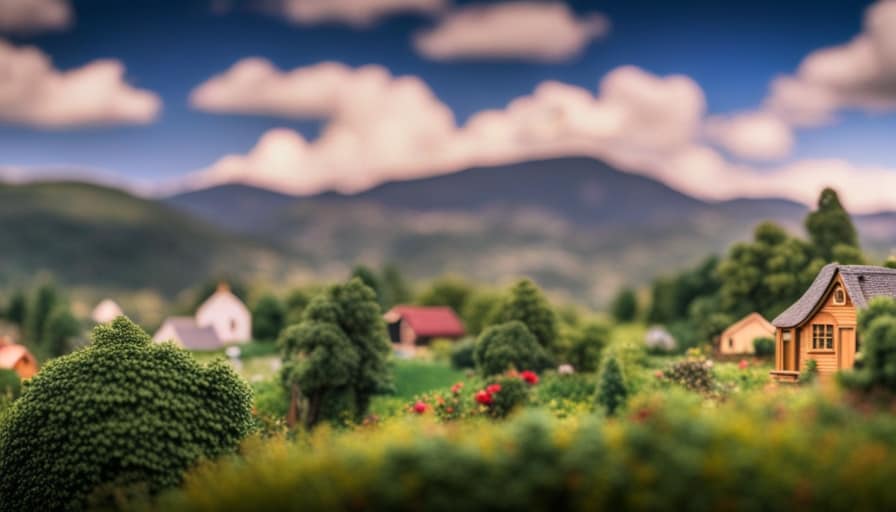
As for water sources, rainwater collection systems can be installed to capture and store rainwater for household use. Digging a well is another option, although it may require permits and additional expenses.
Lastly, composting toilets can be used to manage sewage in an off-grid tiny house, eliminating the need for traditional plumbing systems.
Frequently Asked Questions
What Are the Advantages of Building a Tiny House in Colorado Springs Compared to Other Cities in Colorado?
Building a tiny house in Colorado Springs has many advantages compared to other cities in Colorado. The city has a thriving tiny house community, supportive regulations, and an abundance of natural beauty to enjoy.
Are There Any Specific Design Requirements for Tiny Houses in Colorado Springs?
There are specific design requirements for tiny houses in Colorado Springs, including building regulations that must be followed. It is important to be knowledgeable about these requirements to ensure a successful and compliant build.
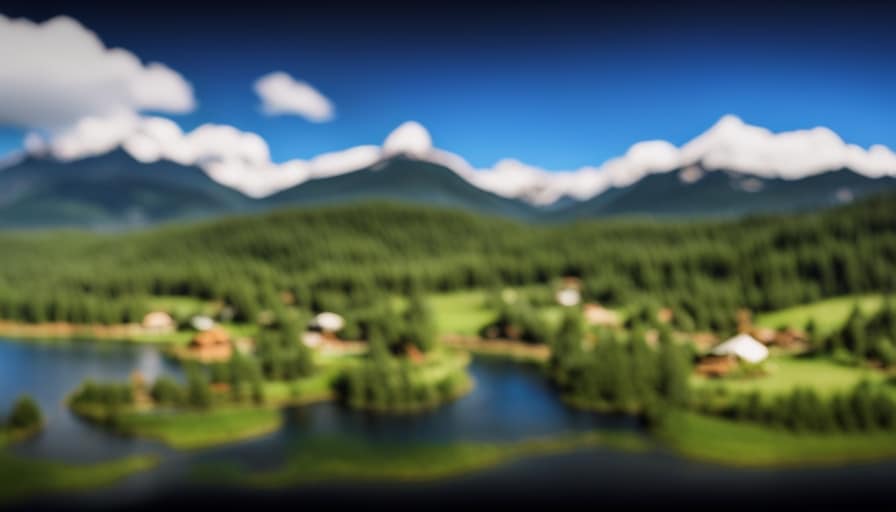
How Long Does the Zoning and Permitting Process Usually Take in Colorado Springs?
The zoning and permitting process in Colorado Springs can be a challenge. It takes time to navigate through the requirements and obtain the necessary approvals. However, with proper guidance and patience, it is possible to build a tiny house in Colorado Springs.
Are There Any Restrictions on Living in a Tiny House on Wheels in Colorado Springs?
Living in a tiny house on wheels in Colorado Springs comes with restrictions. Tiny house parking options are limited, and building codes for tiny houses must be followed. It can be challenging, but not impossible.
Can I Rent Out My Tiny House as an Airbnb in Colorado Springs?
Renting out a tiny house as an Airbnb in Colorado Springs is possible, but there are regulations to follow. It’s important to familiarize yourself with local zoning laws and obtain any necessary permits before listing your tiny house as a rental property.
Conclusion
Building a tiny house in Colorado Springs may be challenging due to zoning regulations, finding suitable land, navigating building codes, securing financing, and dealing with utilities.
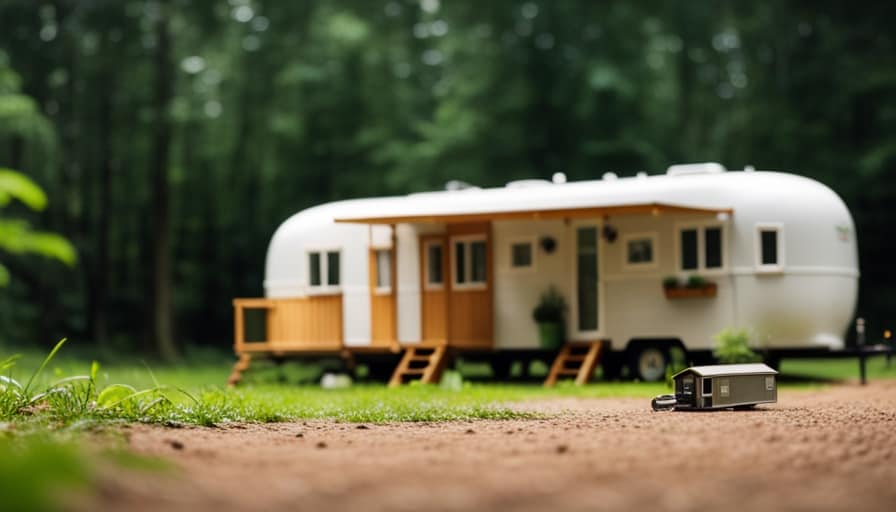
However, with determination and thorough research, it’s possible to overcome these obstacles.
For example, Sarah, a Colorado Springs resident, successfully built her own off-grid tiny house by carefully selecting land outside city limits, obtaining the necessary permits, and utilizing solar power.
Her experience demonstrates that with proper planning and knowledge, building a tiny house in Colorado Springs can be a rewarding and sustainable endeavor.
I’m Theodore, and I love tiny houses. In fact, I’m the author of Tiny House 43, a book about tiny houses that are also tree houses. I think they’re magical places where imaginations can run wild and adventures are just waiting to happen.
While tree houses are often associated with childhood, they can be the perfect adult retreat. They offer a cozy space to relax and unwind, surrounded by nature. And since they’re typically built on stilts or raised platforms, they offer stunning views that traditional homes simply can’t match.
If you’re looking for a unique and romantic getaway, a tree house tiny house might just be the perfect option.
-

 Beginners Guides2 weeks ago
Beginners Guides2 weeks agoHow To Buy A Tesla Tiny House
-

 Energy Efficiency2 months ago
Energy Efficiency2 months agoBest Tiny Homes For Cold Climates
-

 Beginners Guides1 week ago
Beginners Guides1 week agoTiny House Nation Where Are They Now Stephanie
-

 Tiny House Resources (e.g., legalities, cost, insurance, FAQs)2 months ago
Tiny House Resources (e.g., legalities, cost, insurance, FAQs)2 months agoDo Tiny Homes Need Planning Permission?
-

 Beginners Guides3 weeks ago
Beginners Guides3 weeks agoFrom The Show Tiny House Nation How Many Keep Their Tiny House?
-

 Beginners Guides2 months ago
Beginners Guides2 months agoUsing a Climbing Net For Treehouse Construction
-

 Beginners Guides2 months ago
Beginners Guides2 months agoHow to Build a Treehouse Without Drilling Into the Tree
-

 Beginners Guides3 weeks ago
Beginners Guides3 weeks agoTiny House Nation Who Pays For The Houses





